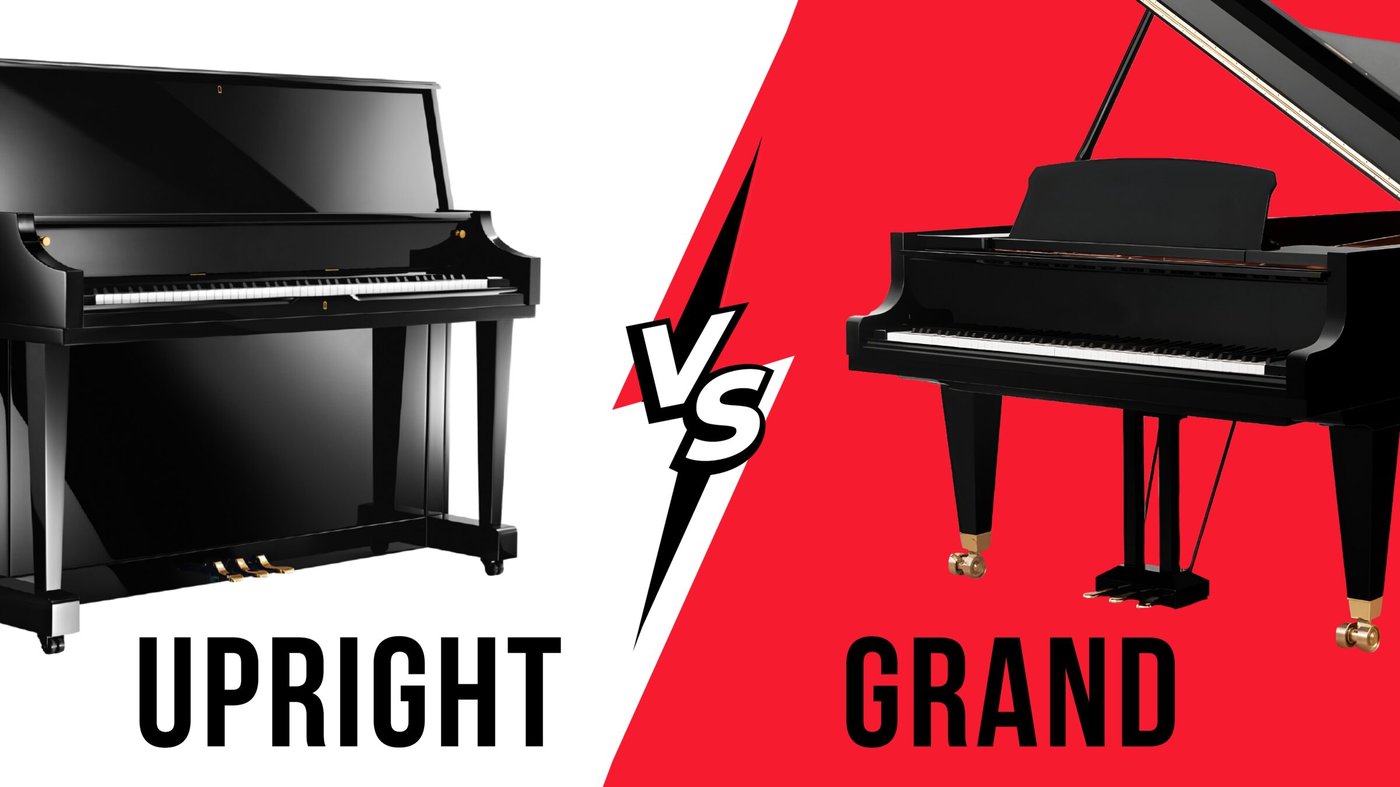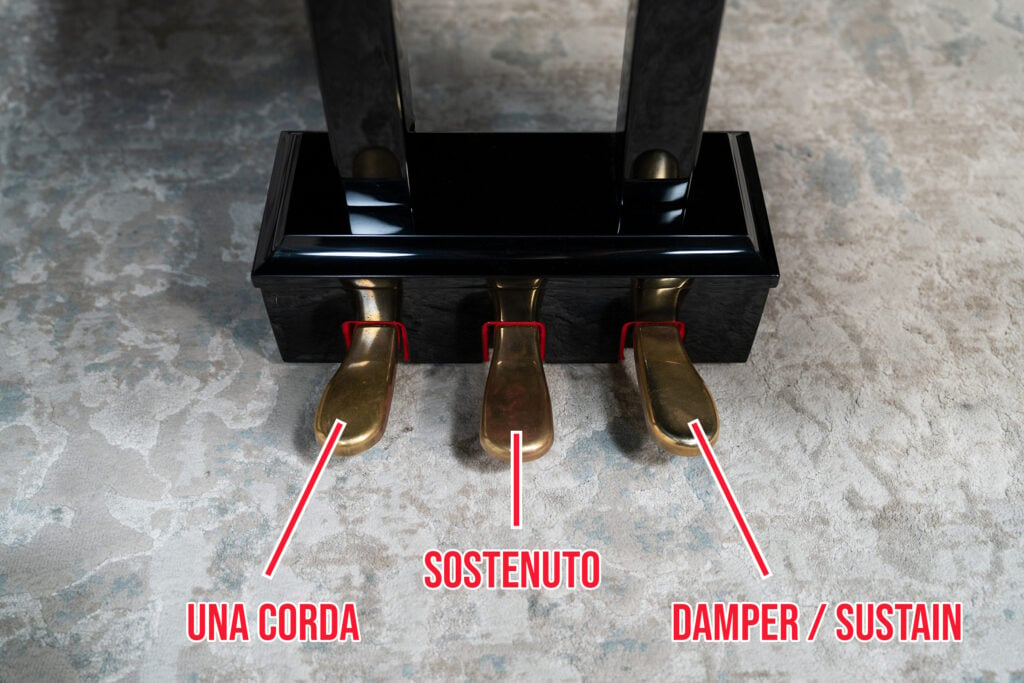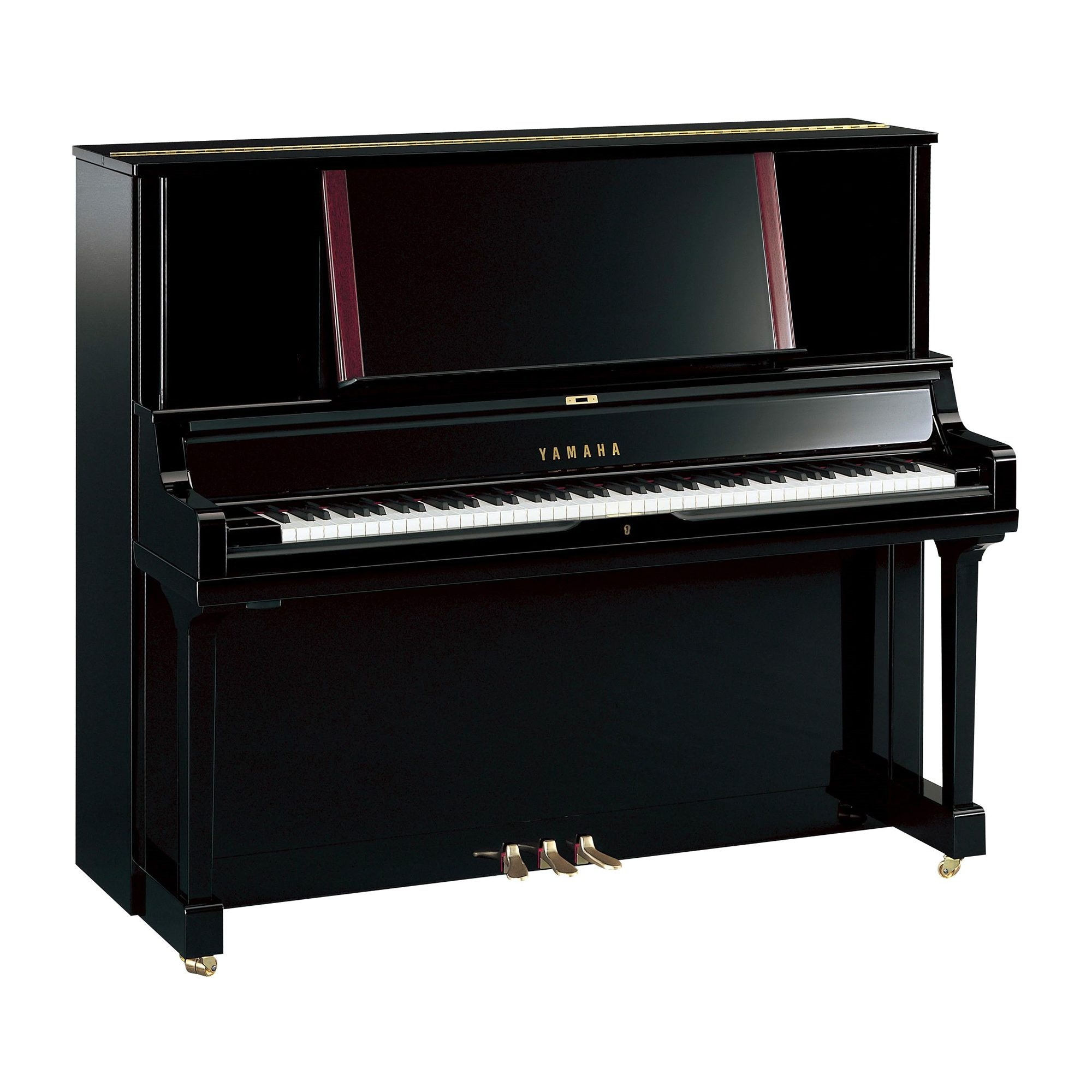
Upright vs grand piano: what’s the difference? Is one always better than the other, and how? Do you need a grand piano to become a better piano player? We’ll explain everything you need to know in this post!
Table of Contents:
Get exclusive interviews, fascinating articles, and inspiring lessons delivered straight to your inbox. Unsubscribe at any time.
Upright and grand pianos are similar in the sense that they are both acoustic instruments made up of mechanical parts that do similar things. In a nutshell, this is how an acoustic piano—grand OR upright—works:
This cascade of events is called action. You can read a more detailed explanation of how this works in our article How Pianos Work.
Where grand and upright pianos differ is how hammers return to rest. In a grand piano, strings are laid horizontally. The hammer goes up, strikes a string, and comes back down thanks to gravity.
Upright vs Grand Piano Action: Videos by Yamaha
Grand Piano Action
Upright Piano Action
In an upright piano, the strings are laid vertically. Without gravity, upright pianos require a spring mechanism to return a hammer to rest.
A grand piano’s action is often deemed superior because, thanks to gravity, hammers return to rest faster. This enables faster repetition of notes on a grand piano.
Action is the main difference between grand and upright pianos, but there are a few other subtle differences:

Grand pianos typically have a larger soundboard than an upright. This means grand pianos sound louder and richer. This isn’t universal, however. Some baby grands have smaller soundboards than top-of-the-line uprights.

Grand pianos typically have a sostenuto pedal as their middle pedal. Meanwhile, the middle pedal of an upright piano is usually a practice pedal.
The sostenuto pedal is like a selective sustain pedal because it isolates and sustains specific notes. However, this effect is very rare; it’s generally only found in some modern classical pieces.
The practice pedal activates a piece of cloth between the hammers and strings of an upright piano. This is handy, allowing students to practice at all hours of the night without disturbing their housemates and neighbors!
Both uprights and grands have an una corda pedal as their left-most pedal. In a grand, pressing the una corda shifts the hammers to the right so that they hit one string instead of the usual two or three. In an upright piano, the una corda moves the hammers closer to the strings. In both cases, playing with the una corda pedal creates a softer, more rounded tone.
So the question remains: are grand pianos better than uprights? They tend to be much more expensive and take up a lot more space, so this is a good question!
Whether a grand piano is better than an upright also depends on the specific grand and upright. A concert grand from a world-class brand like Steinway, Bechstein, Yamaha, or Kawai will most definitely be a superb instrument. But a baby grand from a less reputable brand may not be much better than an upright.
In general, grand pianos are better than uprights. But owning one is not always necessary. Piano makers recognize that grands are expensive and take up space, so they’ve created alternatives that deliver a similar experience.
“Vertical grands” and “upright grands.” Upright pianos like the Yamaha YUS-5 have larger soundboards than some grand pianos and a sostenuto pedal. This gives piano players a similar experience to a traditional grand without the price tag or space required.

Hybrid pianos. These include the Yamaha AvantGrand series and the Kawai Novus series. They use a real grand piano action, but instead of hammers hitting strings, the hammers hit a sensor which delivers sound through a speaker. This lets players have the best of both worlds: an acoustic feel plus digital features!

At the end of the day, grand pianos do deliver a superior ability to play nuanced, expressive music. They’re best for very serious piano players, classical musicians, and jazz musicians who require a sophisticated tone. Touring pianists who are given a grand piano in concert halls also benefit from owning a grand piano so they can practice on something as close to their performance instrument as possible.
Grand pianos are less necessary for casual players and pop musicians. There was a time when acoustic pianos were way superior to digital keyboards, but today’s digital piano technology has come a long way.
If you’re a piano student, having a digital piano from a reputable brand like Roland or Yamaha should be more than sufficient! Just make sure your piano is full-size with 88 keys and has weighted and graded action.
If you’re in the market for a new piano, here’s one very simple rule of thumb: play the piano before you buy it!
At the end of the day, playing piano is a subjective experience. Choose an instrument that feels good under your fingers, that expresses you.
The piano you prefer may not be the fanciest, most expensive, biggest instrument. But if it feels right, it’s the instrument for you!
More resources about pianos as instruments:
As a Pianote+ Member, you’ll get access to our 10-step Method, song library, and growing community of piano players just like you. Plus: get coached by world-class pianists and learn whenever you want, wherever you want, and whatever you want.
TRY PIANOTE FOR 7 DAYSCharmaine Li is a Vancouver writer who has played piano for over 20 years. She holds an Associate diploma (ARCT) from the Royal Conservatory of Music and loves writing about the ways in which music—and music learning—affects the human experience. Charmaine manages The Note. Learn more about Charmaine here.
/marketing/pianote/promos/april/banner-bg-m.webp)
We use cookies for traffic data and advertising. Cookie Policy »
/marketing/pianote/promos/april/banner-title.webp)